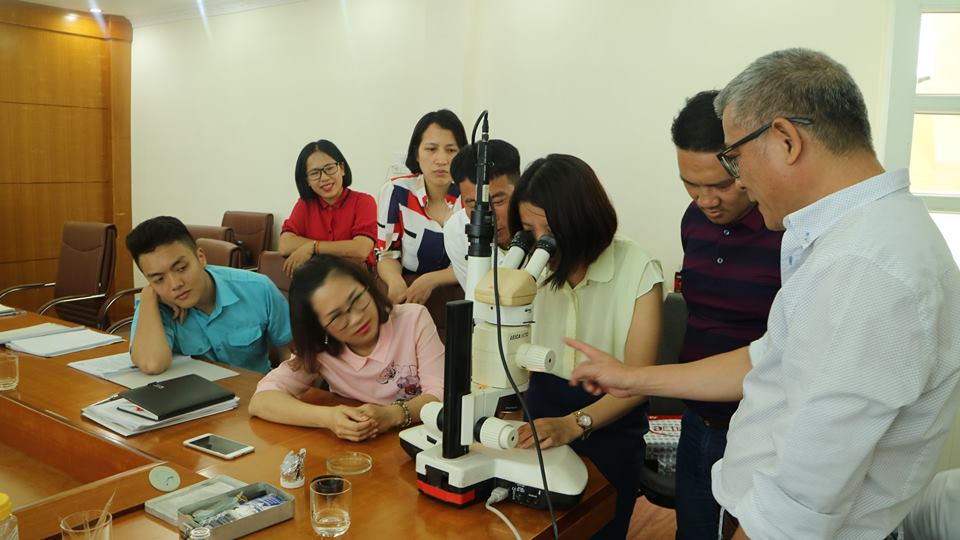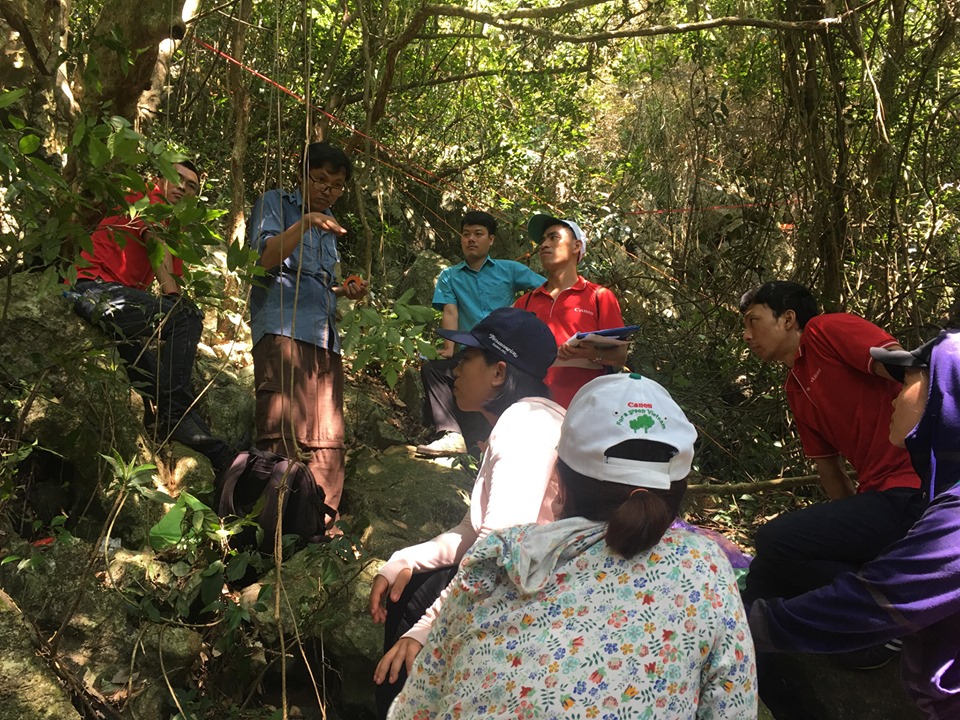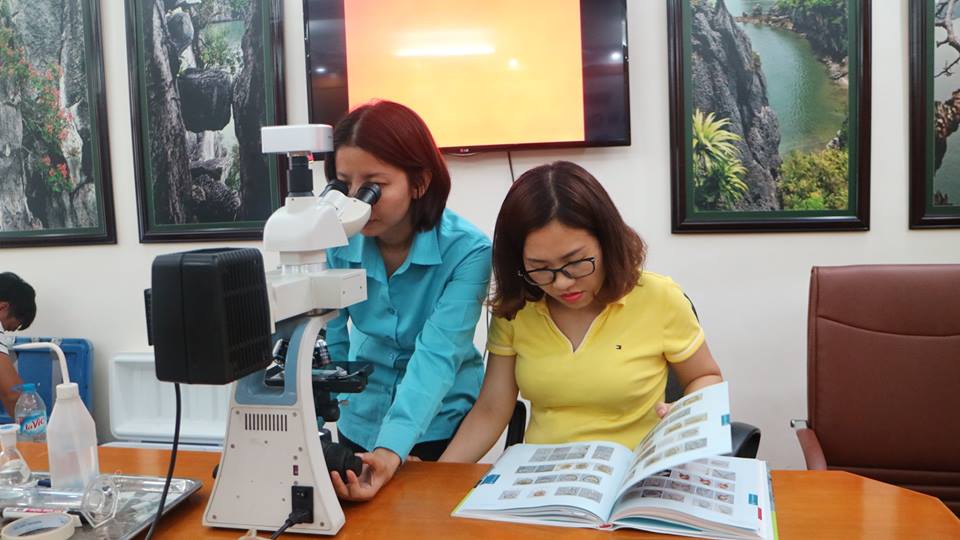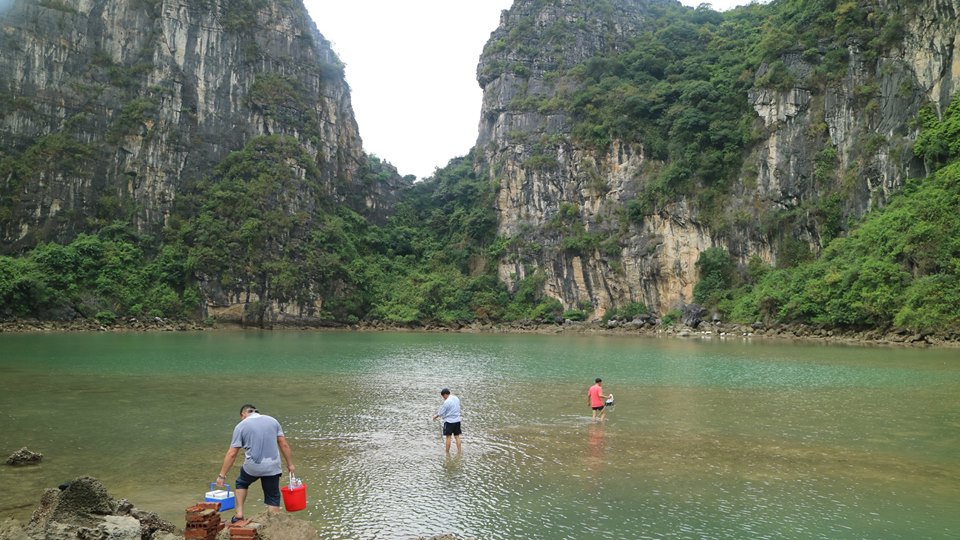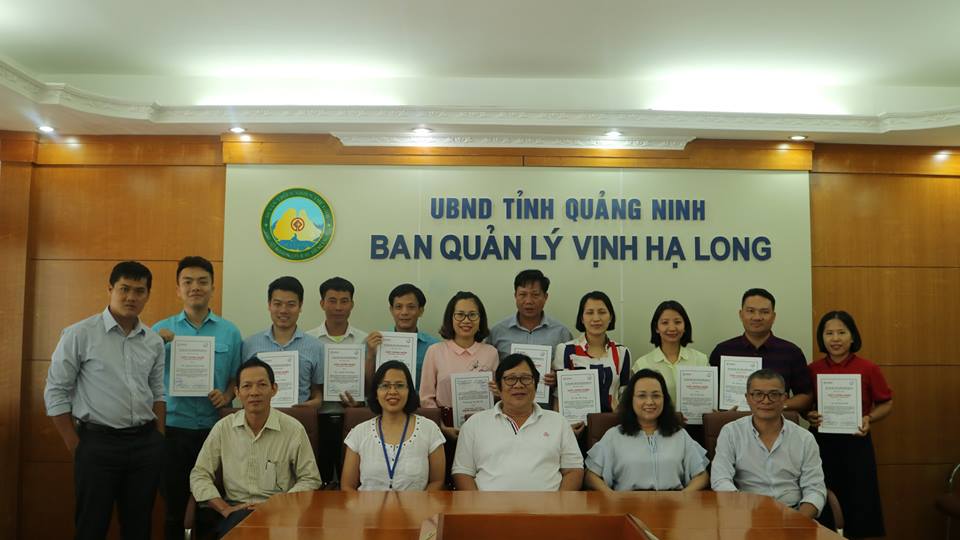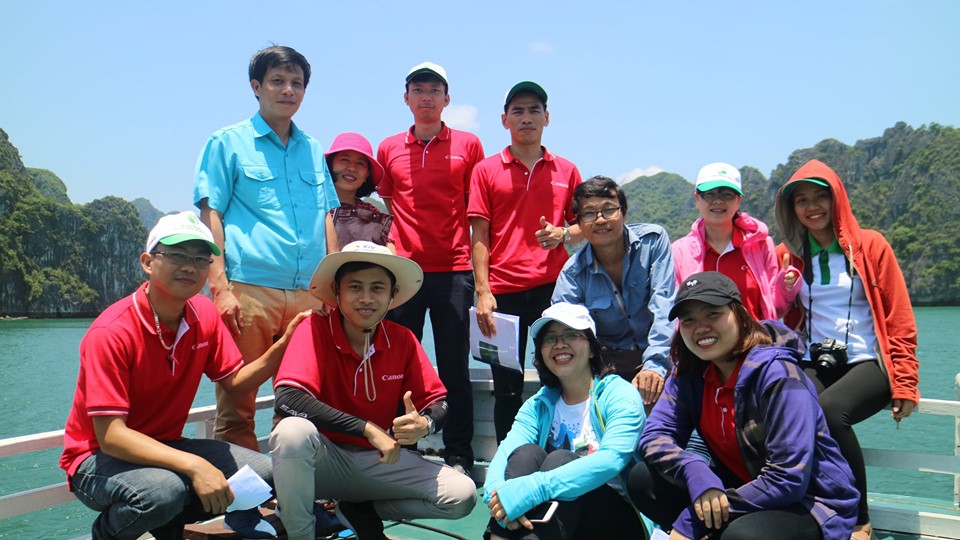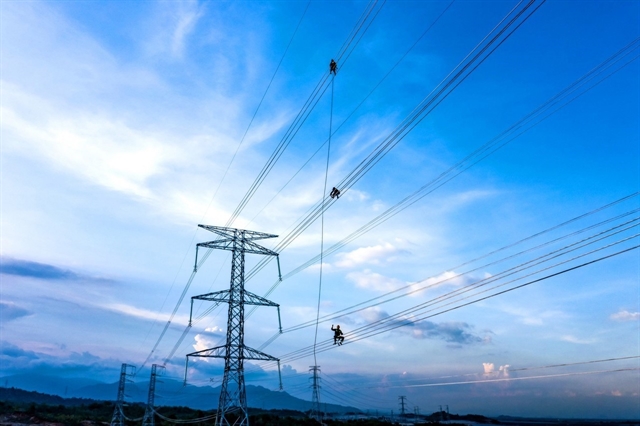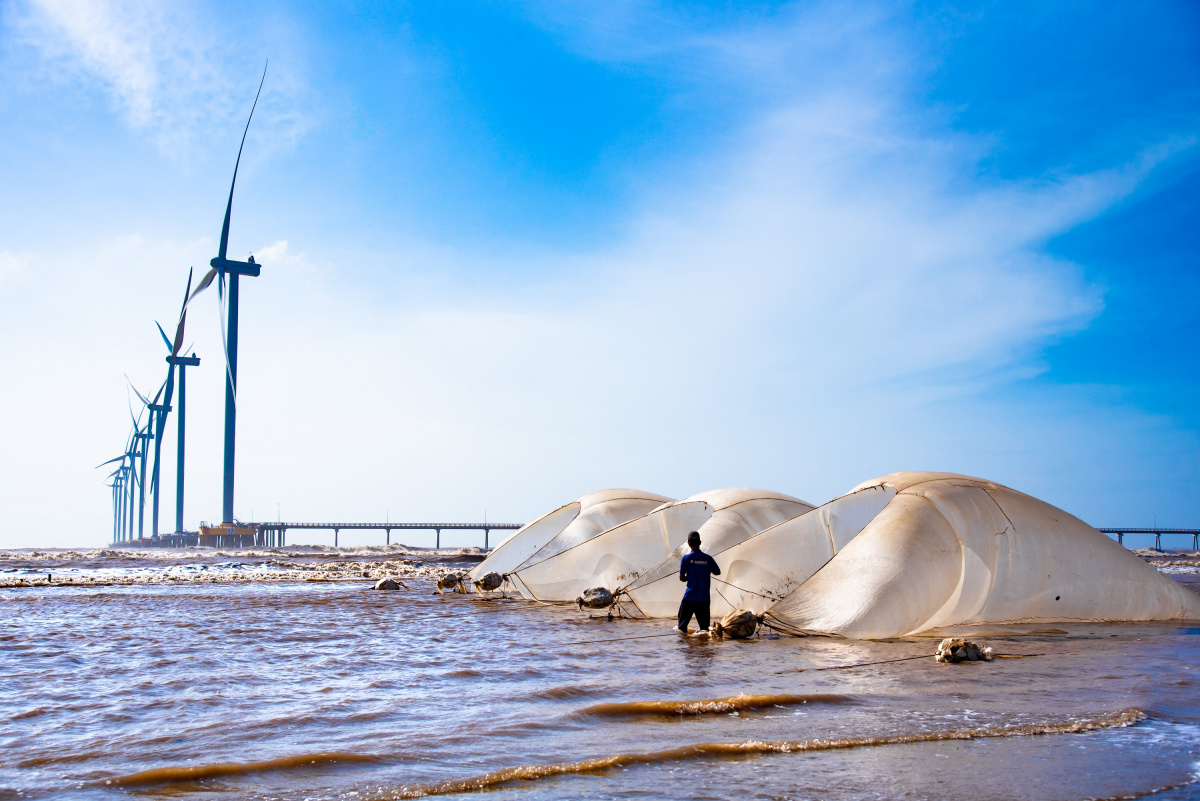Frequent monitoring is needed to cope with red tides
Red tides or harmful algal blooms (HABs) occur when excess nutrients in the water enable the out of control growth of algae. That produces toxins that are concentrated in fish and especially shellfish and make us sick when we swim in contaminated water or eat toxic seafood.
Recent massive fish deaths in Vietnam caused by red tides have attracted public attention to HABs. The Ha Long Bay (HLB) World Heritage Site and Cat Ba Archipelago World Biosphere Reserve are both prone to HABs because the huge increase in tourism and low levels of waste water treatments.
In March – April 2019, IUCN organized two training courses on marine phytoplankton with an emphasis on HABs in Ha Long City for 10 staff of Ha Long Bay Management Board and Cat Ba National Park. Lead trainers were scientists from at National Institute of Oceanography (NIO) in Nha Trang.
Red tides have already caused significant economic losses. In 2011, 10 tons of caged fish in Hang Vem, Cat Ba died and 70% of clams in Phu Long and Hien Hao Communes died. But at the time, staff of two management boards had had no training on HABs.
“When such incidents occur, I just need my staff to tell me if it is algae or shrimp eggs. It is a simple question but important for managers to take right actions. Thanks to IUCN trainings, now they can use microscope to identify different kinds of algae” said Do Tien Thanh, Deputy Head of Research Department, HLB Management Board. Thanh also said that the training was “beyond expectations” as it’s a difficult subject but his staff was inspired by the trainers to practice and learn more every day.
Ms. Mai Thi Trang of the HLB Management Board wrote in her evaluation form that “the teachers taught us how to collect, fix and store water samples. After the training, we are able to identify the most common algae genera and more proactive in response to red tide incidents”.
NIO’s Prof. Nguyen Ngoc Lam, the lead trainer emphasized that red tide is a natural phenomenon that is very difficult to avoid. The only response is to monitor frequently and over the long term to provide early warnings to visitors and seafood industry. As HABs can appear in just few hours and then disappear with the next tide, monitoring water quality once or twice a year is meaningless and has no management value.
Building the capacity of local staff to respond to HABs should be the priority rather than depend on sub-contracting with research institutes who may arrive days after the incident. “Despite the amount of research that’s been done in our bay, there are not many activities to improve staff capacity. Sometimes, they even do not share the reports with us. As such, research findings cannot turn into managerial actions” observed one participant.
While the trainers were impressed with the laboratory of HLB Management Board, a major concern is Cat Ba National Park, which doesn’t even have a basic water monitoring toolkit. Though Cat Ba is listed as one of 16 sites in the Prime Minister Decision No. 742 in 2010 establishing an MPA network, the Hai Phong City People’s Committee has not yet approved plans to set up an MPA. As a result, very little state funding has been allocated to marine protection at a time when tourism is booming.
